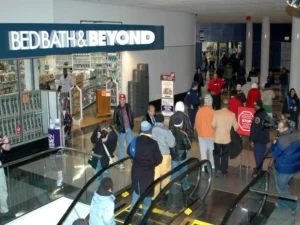While no major flooding has been reported, emergency agencies remain on alert; drivers and truckers advised to follow guidance near coastal routes
The U.S. National Tsunami Warning Center (NTWC) issued a tsunami warning and advisory on Tuesday morning for portions of the Pacific coastline, following a 7.9-magnitude undersea earthquake near the Aleutian Trench, off the coast of Alaska. Although initial wave observations remain limited and no destructive tsunami has yet occurred in the continental United States, precautionary alerts have been activated from Southern California to the Pacific Northwest, prompting local governments to monitor key infrastructure and coastal roadways.
Officials emphasize that the situation is evolving. As of midmorning, no significant inundation has been recorded in major urban centers such as Los Angeles, San Francisco, Seattle, or Portland. However, authorities are maintaining a heightened state of readiness, particularly in areas with known flood-prone lowlands or tsunami hazard zones.
#Tsunami Advisory in effect for coastal regions. Impacts: Surging of sea water in and out of harbors, with water levels fluctuating, dangerous currents and waves are possible. Port San Luis is main point of concern in the area. pic.twitter.com/blXEXMdrVa
— NWS Los Angeles (@NWSLosAngeles) July 30, 2025
More tsunami information! We are carefully monitoring the situation for ports and harbors north of Point Conception as tsunami waves will likely be larger in that area. Go away from the coast, or if in a boat, go out to deep water! #CAwx pic.twitter.com/0xQPQxaan8
— NWS Los Angeles (@NWSLosAngeles) July 30, 2025
What Is the Risk?
According to the NTWC, small tsunami waves have been detected in parts of Alaska and the far northern Pacific, but no widespread flooding or wave damage has been confirmed in the Lower 48 states. Nevertheless, strong currents, minor coastal surges, and localized harbor disruptions remain possible, especially in bays, inlets, and river mouths along the Pacific coast.
Because the magnitude and direction of energy from undersea quakes can shift unpredictably, the potential impact in various parts of the coast is still being assessed.
“At this time, the threat level is under evaluation. We are working closely with state and local emergency agencies to determine if further action is needed,” the NTWC stated in its 7:30 AM update.
🚧 Transportation and Highway Precautions
Though no highway closures have been mandated due to flooding, transportation officials in California, Oregon, and Washington have issued precautionary notices for motorists and commercial drivers, particularly those operating near the coast.
The California Department of Transportation (Caltrans) and its counterparts in Oregon (ODOT) and Washington (WSDOT) have advised the public to:
Avoid stopping or parking in tsunami evacuation zones or low-lying beach roads.
Use inland corridors when possible, especially for heavy freight or long-distance travel.
Expect delays or detours in coastal areas where emergency personnel may be conducting inspections or preparing evacuation routes.
As a precaution, some state troopers and highway patrol units have been deployed to beach access points, bridges, and harbor routes to manage traffic flow and monitor possible surge effects.
🇯🇵🚨| ÚLTIMA HORA: Incia el TSUNAMI en LAS ISLAS KURIL DE RUSIA Y HOKKAIDO DE JAPÓN DESPUÉS DEL GRAN TERREMOTO de 8.8 en Rusia. pic.twitter.com/HEnGcLhqi8
— Eduardo Menoni (@eduardomenoni) July 30, 2025
Tsunami hits Hawai today
— Deccan Chronicle (@DeccanChronicle) July 30, 2025
(Video courtesy : X)#Tsunami #Hawaii #hawaitsunami #Trending pic.twitter.com/Ifv5gMSfv6
Key Roadways Under Monitoring
While no widespread road closures are in effect, several segments of major coastal routes are being monitored closely due to their proximity to the shoreline or historical vulnerability:
California
Highway 1 (Pacific Coast Highway): Caltrans crews are on standby between Monterey and San Luis Obispo, where cliffs and coastal erosion present added risk.
U.S. 101 in Humboldt County: Monitoring in low-lying areas near the Eel River and Arcata Bay.
Oregon
US-101 in Lincoln and Tillamook Counties: Local law enforcement has advised truckers to prepare for possible rerouting inland if surge alerts intensify.
Washington
SR 105 and SR 109, near Westport and Ocean Shores, remain open but under active observation.
No bridge closures have been announced, although structural engineers are conducting routine post-seismic inspections in coastal areas as a precaution.
Guidance for Truckers and Freight Operators
The Federal Motor Carrier Safety Administration (FMCSA) and logistics firms have reminded drivers to maintain flexibility and stay informed via 511 traffic systems. While ports remain operational, short-term delays in container handling may occur in select terminals conducting inspections or following safety protocols.
Truck drivers operating near ports or delivery points in Long Beach, Oakland, Coos Bay, and Tacoma should confirm any schedule changes with dispatchers.
“Even in the absence of major wave activity, emergency protocols may trigger temporary slowdowns or inspections,” noted a logistics coordinator in San Pedro.
🔊 Stay Informed and Prepared
The tsunami advisory may be lifted, downgraded, or extended depending on new data. In the meantime, residents, travelers, and especially those operating near the Pacific coast are encouraged to:
Follow NOAA Weather Radio, Wireless Emergency Alerts (WEA), and local emergency notifications.
Avoid beach areas and harbors until further notice.
Familiarize themselves with tsunami evacuation signage and maps posted in coastal communities.
Federal and local officials stress that false alarms or low-impact events are not reasons to ignore future warnings. In the event of a genuine threat, minutes can make the difference between safety and catastrophe.

The strangest Black Friday purchases: from funny to nothing
Fueled by the adrenaline of the moment and the excitement of scoring big discounts, many shoppers have ended up buying unusual items during Black Friday.

Young drivers wanted, older drivers needed: the industry’s biggest dilemma
The road transportation industry remains at a crossroads in its efforts to recruit young drivers, but the workforce keeps aging and seeking retirement. The road

Thanksgiving, Black Friday and the Long Weekend: America Moves Because Trucks Never Stop
Thanksgiving, Black Friday and the Long Weekend: America Moves Because Trucks Never Stop

Thankful for the Drivers Who Keep America Moving This Thanksgiving
Thankful for the Drivers Who Keep America Moving: The Invisible Work Behind One of the Busiest Thanksgiving Seasons

Preparing for Thanksgiving travel: best and worst times to travel
Whether you are a truck driver, a traveler, or simply someone who needs to move around during these days, we share essential information to help

Cargo theft spikes during Thanksgiving: how to stay safe
Every year during Thanksgiving, cargo theft poses a serious threat to the trucking industry, and this year will be no exception. Every year during Thanksgiving,
